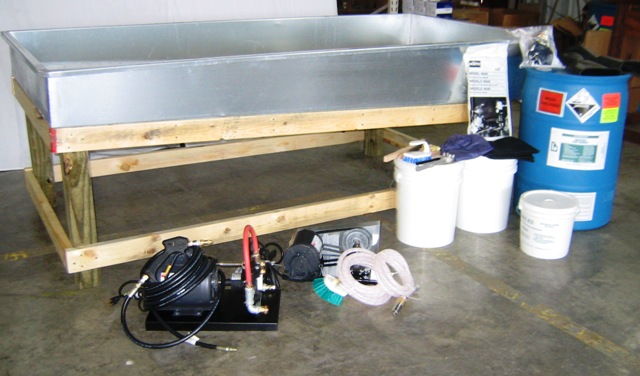Spot Touch-Ups for Polyester Finishes
Tips on products and methods for touching up polyester coatings. February 1, 2015
Question
Konig, the German touch-up people make polyester touch-up products. Usually when I see polyester it is high build and high gloss. Is it difficult to use? How well do the repairs blend? While I do a lot of touch-up, that volume allows me to practice successful methods. I have seldom been asked to repair this, therefor little on the job practice.
Forum Responses
(Finishing Forum)
From Contributor S:
I use the Konig products. What are you repairing? They have two different polyester repair materials, a liquid called Polyester Lacquer and a knife grade gel called Rex Lithe. Both products use the benzoil peroxide hardner. Both are formulated to mix, fill, and polish in the same day in most cases. The success of your repair depends a lot on how you prep the damage. Also, what about color? Are you repairing a clear finish or a colored finish? Provide more details and I'll address them. Polyester repair is polyester repair. Their products work but so do other products. Note: white polyester repairs will rarely match. You will usually end up with what looks like a patch. Black is almost as difficult, almost.
From Contributor J:
Nice to hear a bit of polyester repair input. The way it sets up and can be used quickly is great but I understand it's not easy with color matching being a one shot type repair - especially using subtle coloring when matching wood grains, etc. The repair I did to some black polyester finished speakers was not great, I rubbed through to the primer layer (lighter black) quickly so there was no coming back from that as I don't spray the stuff which made a convincing repair hard/impossible. I know you can use UV lamps and other tricks to get a good repair on pianos and the like and command a good fee for the work. Konig has a polyester DVD which is a challenge to watch but the best instruction on it I could find as not many operators here (UK) work with it, it's good to hear any experience and input on it.
From Contributor S:
Spot touch ups in wood tone polyester finishes have to be done to the substrate. The polyester will only be the clear plastic coating that adheres to and sits above your touch up. Use shellac as a barrier coat and Place your polyester above that. Spot touch ups which blend in should be done using materials from Mohawk or Touch Up Solutions. Your arsenal should include dry pigments (Mohawk calls them Blendal Powders), pastel sticks (Mohawk calls them Blendal Sticks). Use alcohol soluble powdered dyes mixed in shellac to make your own translucent brushable color replacement. You can also use this for great effect to make a color wash for your initial touch up. You'll need a fine line artist liner's brush for fine line graining. You can also use Prismacolor colored pencils if you can get the color to impart from the pencil. Finger-smear your color for feathering and blending, just as you would do with the Blendal Sticks.
To make black polyester use black dye powder to mix into your polyester. This works much better than mixing in liquids. If you don't use enough liquid, regardless of how black, then you will get a grayish tone compared to the original surrounding black polyester. If you use too much liquid then you alter the curing properties of your mixed polyester. If you want to mix in a liquid pigment, you can get away with small quantities of acrylic artists paints (the waterbase stuff). To make white you will need a water-clear polyester. This is where you need to break from Konig. Look for polyester marble adhesives. Tenax is a fine Italian company. You can get both knife-grade paste which uses the white benzoil peroxide creme hardener or the liquid form which uses methyl ethyl ketone peroxide liquid hardener.
From the original questioner:
Contributor S, thanks for your great answers. Given the details you have provided I would practice before accepting a job.
From Contributor S:
Practicing with Konig products is fabulously expensive. You pay a lot for tiny quantities. A 1-quart (or 1/2-liter) can of knife grade polyester paste is a lot cheaper than the tiny tube of Rex Lithe. I haven't tried white knife grade polyester and this stuff just might be the ticket to doing a successful white polyester repair. You get these materials from the marble and stone suppliers. Dye powders are available from Lockwood Dyes in New York City.
